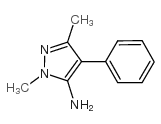3524-32-1
| Name | 1,3-Dimethyl-1H-pyrazol-5-amine |
|---|---|
| Synonyms |
2,5-dimethyl-2H-pyrazol-3-ylamine
1,3-Dimethyl-5-amino pyrazole 1,3-Dimethyl-1H-pyrazol-5-ylamine 1,3-Dimethyl-1H-pyrazol-5-amine MFCD00051651 3-AMINO-2,5-DIMETHYL-2H-PYRAZOLE 5-Amino-1,3-dimethylpyrazole 1,3-dimethyl-5-pyrazolamine 1,3-dimethyl-5-amino-1H-pyrazole 5-Amino-1,3-dimethyl-1H-pyrazole 2,5-dimethylpyrazol-3-amine N-(2,5-dimethyl-2H-pyrazol-3-yl)-amine 3-diMethyl-1H-pyrazol-5-aMine 1,3-dimethyl-1H-pyrazole-5-amine |
| Density | 1.2±0.1 g/cm3 |
|---|---|
| Boiling Point | 234.7±20.0 °C at 760 mmHg |
| Melting Point | 65-69 °C(lit.) |
| Molecular Formula | C5H9N3 |
| Molecular Weight | 111.145 |
| Flash Point | 95.8±21.8 °C |
| Exact Mass | 111.079643 |
| PSA | 43.84000 |
| LogP | 0.01 |
| Vapour Pressure | 0.1±0.5 mmHg at 25°C |
| Index of Refraction | 1.582 |
Synonym:5-Amino-1,3-dimethylpyrazol Section 2 - COMPOSITION, INFORMATION ON INGREDIENTS
Risk Phrases: 36/37/38 Section 3 - HAZARDS IDENTIFICATION EMERGENCY OVERVIEW
Irritating to eyes, respiratory system and skin. Potential Health Effects Eye: Causes eye irritation. Skin: Causes skin irritation. May be harmful if absorbed through the skin. Ingestion: May cause irritation of the digestive tract. May be harmful if swallowed. Inhalation: Causes respiratory tract irritation. May be harmful if inhaled. Chronic: Not available. Section 4 - FIRST AID MEASURES Eyes: Flush eyes with plenty of water for at least 15 minutes, occasionally lifting the upper and lower eyelids. Get medical aid. Skin: Get medical aid. Flush skin with plenty of water for at least 15 minutes while removing contaminated clothing and shoes. Ingestion: Get medical aid. Wash mouth out with water. Inhalation: Remove from exposure and move to fresh air immediately. If not breathing, give artificial respiration. If breathing is difficult, give oxygen. Get medical aid. Notes to Physician: Treat symptomatically and supportively. Section 5 - FIRE FIGHTING MEASURES General Information: As in any fire, wear a self-contained breathing apparatus in pressure-demand, MSHA/NIOSH (approved or equivalent), and full protective gear. Extinguishing Media: Use water spray, dry chemical, carbon dioxide, or chemical foam. Section 6 - ACCIDENTAL RELEASE MEASURES General Information: Use proper personal protective equipment as indicated in Section 8. Spills/Leaks: Vacuum or sweep up material and place into a suitable disposal container. Section 7 - HANDLING and STORAGE Handling: Avoid breathing dust, vapor, mist, or gas. Avoid contact with skin and eyes. Storage: Store in a cool, dry place. Store in a tightly closed container. Section 8 - EXPOSURE CONTROLS, PERSONAL PROTECTION Engineering Controls: Facilities storing or utilizing this material should be equipped with an eyewash facility and a safety shower. Use adequate ventilation to keep airborne concentrations low. Exposure Limits CAS# 3524-32-1: Personal Protective Equipment Eyes: Not available. Skin: Wear appropriate protective gloves to prevent skin exposure. Clothing: Wear appropriate protective clothing to prevent skin exposure. Respirators: Follow the OSHA respirator regulations found in 29 CFR 1910.134 or European Standard EN 149. Use a NIOSH/MSHA or European Standard EN 149 approved respirator if exposure limits are exceeded or if irritation or other symptoms are experienced. Section 9 - PHYSICAL AND CHEMICAL PROPERTIES Physical State: Solid Color: pale yellow - yellow Odor: characteristic odor pH: Not available. Vapor Pressure: Not available. Viscosity: Not available. Boiling Point: Not available. Freezing/Melting Point: 78 - 80 deg C Autoignition Temperature: Not available. Flash Point: Not available. Explosion Limits, lower: Not available. Explosion Limits, upper: Not available. Decomposition Temperature: Solubility in water: Specific Gravity/Density: Molecular Formula: C5H9N3 Molecular Weight: 111 Section 10 - STABILITY AND REACTIVITY Chemical Stability: Not available. Conditions to Avoid: Incompatible materials. Incompatibilities with Other Materials: Strong oxidizing agents, acid chlorides. Hazardous Decomposition Products: Nitrogen oxides, carbon monoxide, carbon dioxide. Hazardous Polymerization: Not available. Section 11 - TOXICOLOGICAL INFORMATION RTECS#: CAS# 3524-32-1 unlisted. LD50/LC50: Not available. Carcinogenicity: 1,3-Dimethyl-1H-pyrazol-5-amine - Not listed by ACGIH, IARC, or NTP. Section 12 - ECOLOGICAL INFORMATION Section 13 - DISPOSAL CONSIDERATIONS Dispose of in a manner consistent with federal, state, and local regulations. Section 14 - TRANSPORT INFORMATION IATA No information available. IMO No information available. RID/ADR No information available. Section 15 - REGULATORY INFORMATION European/International Regulations European Labeling in Accordance with EC Directives Hazard Symbols: XI Risk Phrases: R 36/37/38 Irritating to eyes, respiratory system and skin. Safety Phrases: S 26 In case of contact with eyes, rinse immediately with plenty of water and seek medical advice. S 37/39 Wear suitable gloves and eye/face protection. WGK (Water Danger/Protection) CAS# 3524-32-1: No information available. Canada None of the chemicals in this product are listed on the DSL/NDSL list. CAS# 3524-32-1 is not listed on Canada's Ingredient Disclosure List. US FEDERAL TSCA CAS# 3524-32-1 is not listed on the TSCA inventory. It is for research and development use only. SECTION 16 - ADDITIONAL INFORMATION N/A |
| Symbol |

GHS07 |
|---|---|
| Signal Word | Warning |
| Hazard Statements | H315-H319-H335 |
| Precautionary Statements | P261-P305 + P351 + P338 |
| Personal Protective Equipment | dust mask type N95 (US);Eyeshields;Gloves |
| Hazard Codes | Xn:Harmful; |
| Risk Phrases | R22;R36/37/38 |
| Safety Phrases | S26-S36-S37/39 |
| RIDADR | NONH for all modes of transport |
| WGK Germany | 3 |
| HS Code | 2933199090 |
| Precursor 9 | |
|---|---|
| DownStream 10 | |
| HS Code | 2933199090 |
|---|---|
| Summary | 2933199090. other compounds containing an unfused pyrazole ring (whether or not hydrogenated) in the structure. VAT:17.0%. Tax rebate rate:13.0%. . MFN tariff:6.5%. General tariff:20.0% |

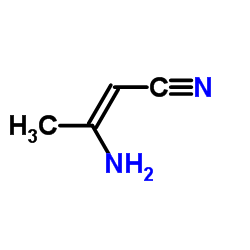
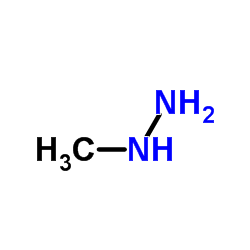
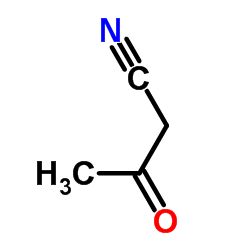




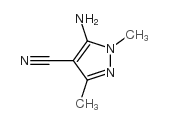
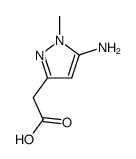
![1,3-dimethyl-2H-pyrazolo[3,4-d]pyrimidine-4,6-dione structure](https://image.chemsrc.com/caspic/400/1072895-79-4.png)

![DIETHYL 2-[[(1,3-DIMETHYL-1H-PYRAZOL-5-YL)AMINO]METHYLIDENE]MALONATE structure](https://image.chemsrc.com/caspic/473/20481-33-8.png)
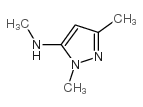
![1-METHYL-1H-PYRAZOLO[3,4-B]PYRIDINE-3-CARBOXYLIC ACID structure](https://image.chemsrc.com/caspic/412/116855-09-5.png)
![2-[(1,3-dimethyl-1H-pyrazol-5-yl)amino]Benzoic acid structure](https://image.chemsrc.com/caspic/325/34798-68-0.png)
![4-chloro-1,3-dimethylpyrazolo[3,4-b]pyridine-5-carbonyl chloride structure](https://image.chemsrc.com/caspic/283/175201-95-3.png)
![ETHYL 4-CHLORO-1,3-DIMETHYL-1H-PYRAZOLO[3,4-B]PYRIDINE-5-CARBOXYLATE structure](https://image.chemsrc.com/caspic/311/20481-15-6.png)
![4-Chloro-1,3-dimethyl-1H-pyrazolo[3,4-b]pyridine-5-carboxylic acid structure](https://image.chemsrc.com/caspic/321/175201-94-2.png)
